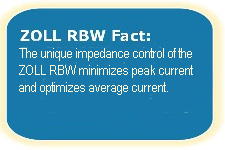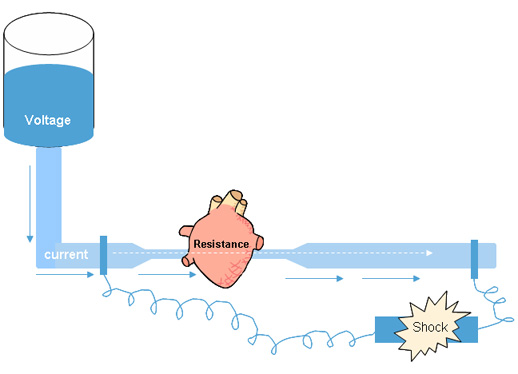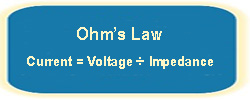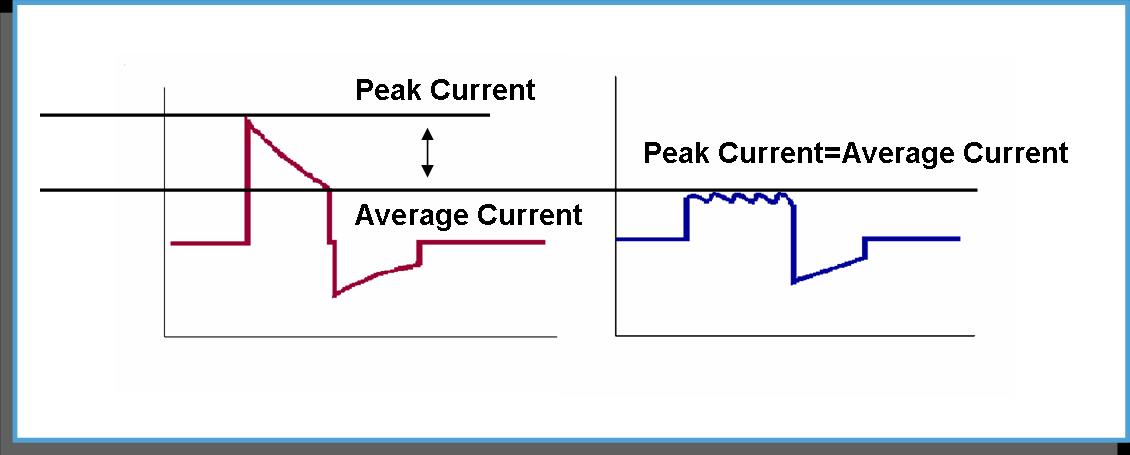Biphasic Technology - Electricity
Principles of Electricity
It has clearly been established that current defibrillates the heart. But, it can be easy to overlook the importance of current in defibrillation because defibrillation settings are labeled with energy, not current. Energy is actually the product of three variables:
A basic understanding of electricity is often helpful in understanding the differences between biphasic waveforms. Components of electricity are often described in terms of water: voltage is analogous to pressure - such as that created in a tank of water; current is analogous to flow.
The energy setting on a defibrillator corresponds to how much voltage is charged on the capacitor within the device. This correlation is not the same for every device. One manufacturer may charge 1,500 volts for a 200 J setting, while another may charge 2,200 volts. For this reason, comparison of energy settings between devices is no longer appropriate.
The amount of current delivered to the heart is a function of two factors: voltage and impedance. The amount of current delivered to the heart is determined by Voltage/Impedance. (This relationship is known as Ohm's Law.)
So, for a given energy setting, the current depends on 1) the amount of voltage used for a given energy setting on a particular device, and 2) patient impedance.
It is also important to distinguish between two different types of current: average current and peak current. Peak current is the maximum amount of current seen by the heart. Too much peak current can result in electroporation (formation of aqueos pores in the cell membrane caused by a strong external electric field; the basic mechanism of tissue injury on high-voltage electric shock) of the myocardial cells, which may result in myocardial dysfunction. Average current is the mean amount of current seen by the heart over the duration of the shock. This is the component believed to be responsible for successful defibrillation.
 |
|
Read on to uncover the unique advantages of ZOLL's Rectilinear Biphasic™ Waveform:
Principles of Electricity
More Current at 200 J than other biphasic waveforms at 360 J
Optimal Duration for Defibrillation Shocks
Superior for Cardioversion of Atrial Fibrillation
Superior for Defibrillation of Ventricular Fibrillation
Superior for Defibrillation of Out-of-Hospital Cardiac Arrest
Pediatric Biphasic Recommendations
Bibliography




